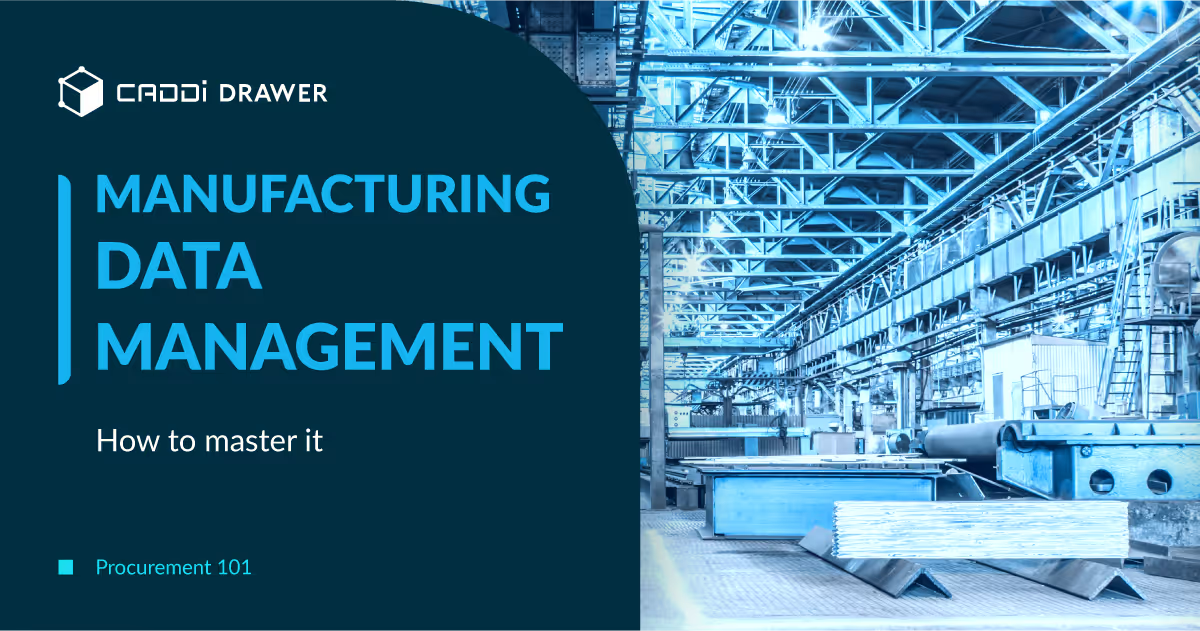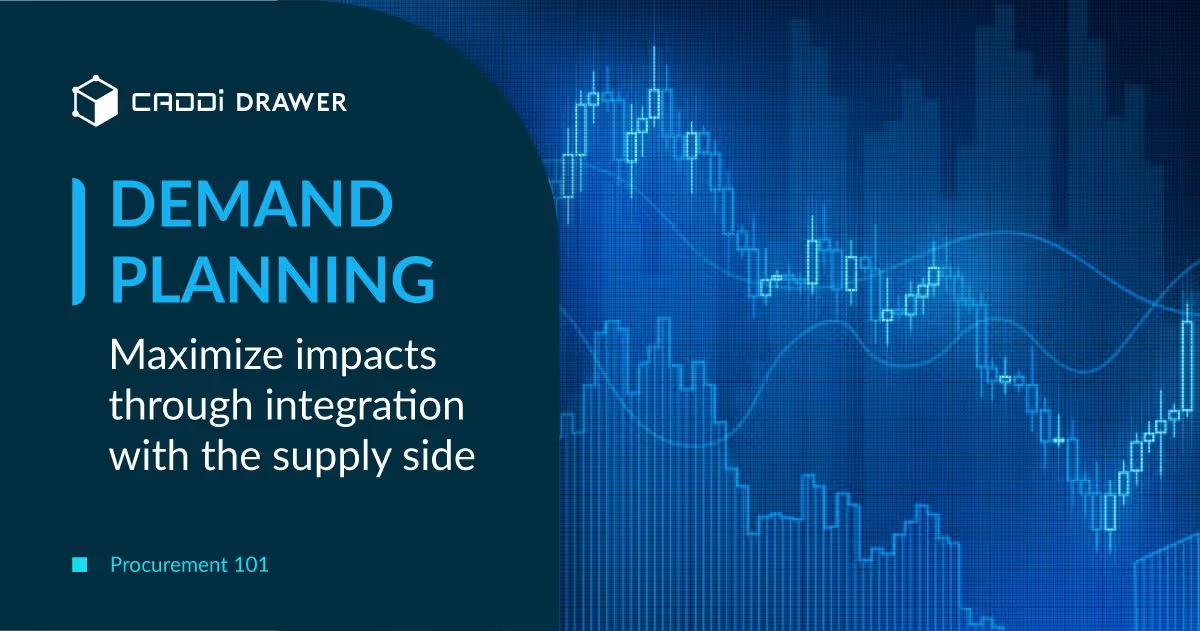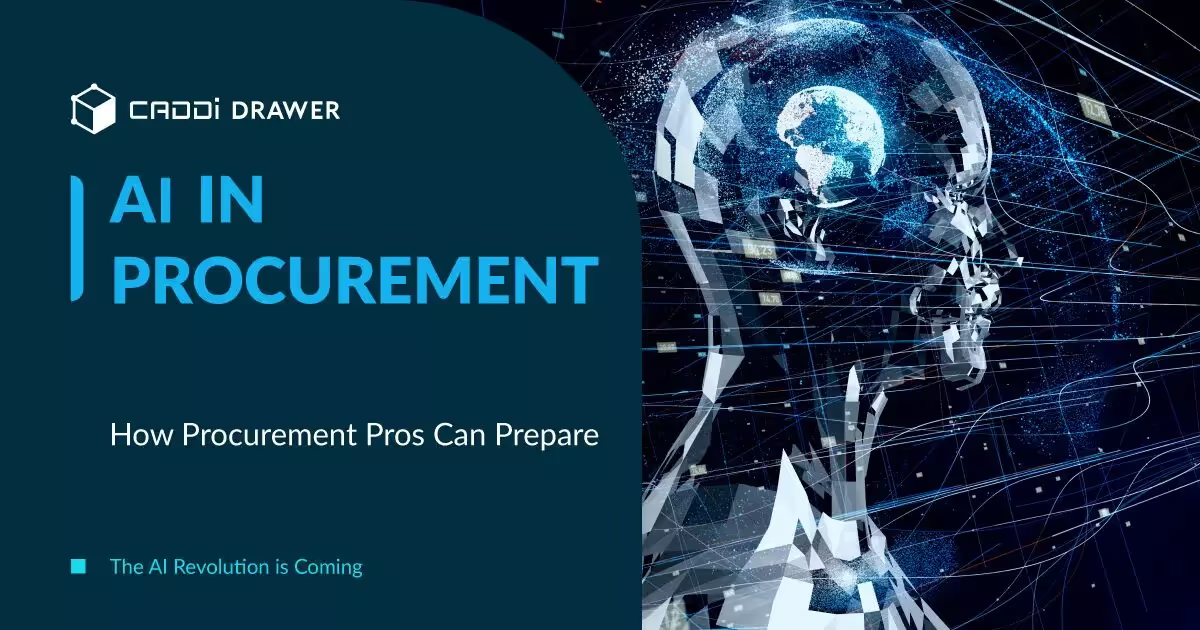Procurement 101: Manufacturing Data Management – How to master it

Table of Contents

What is Manufacturing Data Management?
Manufacturing data management (MDM) refers to the processes, tools, and techniques used by manufacturing organizations to effectively collect, organize, and analyze data from various sources. With the rise of Industry 4.0 and smart manufacturing, mastering MDM has become critical for manufacturers to gain insights, increase efficiency, and remain competitive.
Effective MDM enables manufacturers to gain visibility across the entire production process, from suppliers and inventory to shop floor operations and product quality. By consolidating data into a central repository, manufacturers can identify patterns and anomalies to optimize production. MDM also enhances data quality through validation, standardization, and deduplication. This ensures metrics and analytics are based on high-quality, trustworthy data.
Additionally, MDM facilitates integration between different manufacturing systems like ERP, MES, and automation. This breaks down data silos to provide a unified source of truth. MDM also enables easy sharing of data with external partners and customers through APIs.
Challenges of Data Management
Manufacturing companies often struggle with data management due to disconnected systems and data silos. Here are some key challenges:
- Data silos – Most manufacturers have multiple enterprise systems like ERP, MES, PLM, SCM, CRM, etc. Each system maintains its own data set, which leads to data silos. There is no single source of truth across systems.
- Multiple versions of data – Since data resides in disconnected systems, there can be multiple versions of the same data entity like customer, product, supplier etc. This makes it difficult to get consistent analytics.
- Legacy systems – Many manufacturers have legacy systems which are inflexible and difficult to integrate. Migrating away from legacy systems is an expensive and risky endeavor. This further promotes disparate data silos.
- Lack of data governance – With dispersed systems, there are no standardized processes for data management. Issues like data redundancy, quality and security are pervasive.
- Manual processes – Movement of data across systems requires tedious manual processes like spreadsheet downloads, file transfers, mappings, and uploads. This is error-prone and time-consuming.
The inability to establish a single source of truth across the enterprise is the crux of data management challenges for manufacturers. Let’s look at how master data management can help overcome these roadblocks.
Benefits of MDM
MDM offers numerous benefits that can greatly improve business operations and decision making. Here are some of the key advantages:
- Single Source of Truth – MDM consolidates data from multiple sources into a single master repository. This provides one authoritative set of standardized data that gives a true, trusted view of key entities like customers, products, suppliers etc.
- Improved Efficiency – With unified master data, employees don’t have to spend time reconciling numbers from different systems. This saves time and effort while reducing errors. MDM also facilitates reuse of master data across multiple systems.
- Enhanced Analytics – Clean, consistent data leads to better analysis and reporting. MDM enables a single version of truth that yields accurate insights from business intelligence and analytics tools. Data reliability is improved.
- Agility – Faster access to trustworthy information helps organizations respond more quickly to changing market conditions and customer needs. MDM makes it easier to onboard new systems and datasets.
- Data Governance – MDM centralizes data management tasks like policies, controls, issue resolution etc. This makes it easier to ensure data quality and compliance with regulations. Data can be monitored for anomalies more effectively.
- Customer Centricity – By consolidating data from CRM, sales, support etc. MDM provides a 360 degree customer view that helps better serve and retain customers. New touchpoints can be added seamlessly.
Master data management streamlines operations, cuts costs, reduces errors and helps make smarter business decisions. With authoritative cross-functional master data, organizations can gain a true competitive advantage.
Implementing MDM
Successfully implementing an MDM solution requires careful planning and execution. Here are some key steps:
- Assess your needs – Before selecting an MDM solution, clearly identify your use cases, data types, integration requirements, and goals. Involve key stakeholders to get buy-in. Document your business requirements.
- Get stakeholder buy-in – MDM impacts multiple departments so get executive sponsorship. Make the benefits clear to each group like sales, marketing, finance, IT, etc. Address concerns early and get input on needs.
- Find the right solution – With requirements defined, research MDM solutions. Consider cloud vs on-premises, level of pre-configuration vs customization needed, analytics capabilities, and budgets. Shortlist vendors to demo solutions.
- Start small – Phase the implementation by data domain or use case. Pilot the solution then expand after lessons learned. Starting small reduces risk and lets you test the solution.
- Integrate – Plan how the MDM will integrate with other systems like ERP, CRM, and databases. APIs and ETL tools can assist with integration. Test integrations thoroughly.
- Cleanse data – Before loading into the MDM, data must be cleansed. Standardize formats, remove duplicates, and fix inaccuracies. Data governance helps maintain quality.
- Manage change – New technology causes business disruption so manage changes via training, communications, and process updates. Get user feedback continuously to drive adoption.
- Measure benefits – Track metrics before and after like customer satisfaction, operational efficiency, time-to-market, reporting, and analytics to quantify MDM benefits.
Careful execution of these steps helps ensure a successful MDM program that delivers value across the organization.
MDM Architecture
MDM architecture centers around a master data hub that acts as a central repository for all master data coming from various source systems. The architecture typically consists of:
- A central master data hub that acts as the single source of truth for master data. The hub stores, standardizes, governs, and shares master data across the organization.
- Data stores for storing master data from source systems. These include databases and data warehouses that store validated and reconciled master data.
- Data integration mechanisms like ETL (extract, transform, load) tools that extract data from sources, transform it to match business rules, and load it into the central MDM hub.
- MDM hub integrations with source systems using APIs and web services. This allows seamless exchange of master data between the MDM hub and sources.
- Data quality tools that validate, cleanse, match, and deduplicate master data before loading it into the hub. This ensures only trusted data enters the MDM repository.
- Metadata management capabilities to define data models, attributes, hierarchies, mappings, etc.
- Data governance tools for stewardship, issue tracking, audit trails, workflows, etc. around master data.
- Security controls like role-based access, encryption, masking, etc. for authorizing and protecting critical master data.
- Reporting, analytics, and business intelligence tools that consume master data from the hub for analytics use cases.
The goal of MDM architecture is to establish a single version of truth for master data that can be trusted and used across the organization for various business needs. The centralized hub acts as the beating heart that pumps cleansed and governed master data to downstream systems.
Data Governance
Effective data governance is crucial for successful MDM implementation. This involves establishing rules, policies, roles, and stewardship related to managing master data.
- Rules – Companies should define guidelines for how master data is entered, validated, updated, deleted, etc. This brings consistency and accuracy.
- Policies – Develop organization-wide policies for master data use and maintenance. Policies should align with business needs and data strategies.
- Roles – Clearly define responsibilities for different users – who enters data, who fixes errors, who approves changes, etc. Data stewards often oversee master data domains.
- Stewardship – Stewards verify data accuracy, work to improve quality, and ensure adherence to rules and policies. They are domain experts who understand data use cases and requirements.
With strong governance, companies can trust their master data. It enables smooth MDM adoption and maximum business value. Rules and policies for accessing, managing, and using master data should suit the organization’s needs and maturity level.
Data Security
Managing sensitive data requires strong security measures. Some key aspects of data security in MDM include:
Access Controls
- Role-based access controls limit data access to authorized users.
- Access permissions should be granted on a need-to-know basis.
- Processes for granting, changing and revoking access must be established.
Encryption
- Encrypting data at rest and in transit protects against unauthorized access.
- Select algorithms like AES-256 provide strong protection for sensitive data.
- Encryption keys should be securely managed.
Auditing
- Audit trails record data access attempts and changes.
- Monitoring audit logs enables quick response to security incidents.
- Data access patterns can be analyzed to detect suspicious activity.
With comprehensive access controls, encryption, and auditing, organizations can protect their master data from internal and external threats. This allows them to fully realize the benefits of MDM without compromising security.
Data Quality
Data quality is critical for effective MDM. Organizations should validate, standardize, and enrich their data.
- Validation ensures the data meets business rules and integrity constraints. This includes checking for accuracy, completeness, timeliness, uniqueness, and validity. Input forms, scripts, and algorithms can validate data upon entry or extraction.
- Standardization formats data consistently for unified analysis. This includes establishing naming conventions, definitions, data types, patterns, and reference data values. Standardizing data from disparate systems facilitates integration.
- Enrichment appends and links relevant information to master data. This can include adding supplemental attributes, associations, identifiers, content, and metadata. Enrichment makes data more descriptive and valuable for business users.
With proper data quality methods, organizations can correct defects, fill gaps, and prepare master data for downstream processes. High-quality master data is essential for reporting, analytics, and decision making.
Analytics and Reporting
With MDM, companies gain business intelligence through improved analytics and reporting. MDM provides accurate, consistent data that allows for sophisticated data analysis and the creation of insightful reports and dashboards.
Some of the key analytics and reporting benefits of MDM include:
- Enhanced business intelligence – With reliable, integrated data, companies can run analytics to identify trends, patterns, and opportunities that were not visible before. This supports data-driven decision making.
- Improved reporting – Reports built on clean, unified data are more accurate and useful. Management can trust the data and take action on reports.
- Dashboards – MDM enables the creation of dashboards that bring together key metrics, KPIs, and data visualizations to provide executives with real-time insights. Dashboards can be role-based to deliver relevant information.
- Data mining – Data mining techniques performed on high-quality MDM data can reveal new insights and relationships to inform strategy and planning.
- Predictive analytics – Statistical models and machine learning algorithms work best with accurate, consistent data. Predictive analytics on MDM data can forecast future trends and outcomes.
With trusted information delivered through analytics and reporting, companies can identify and act on opportunities to improve operations, optimize processes, understand customers better, and gain a competitive edge. MDM powers the modern analytical capabilities that are crucial for data-driven organizations.
Conclusion
Master data management is an essential initiative for any organization that relies on accurate data to drive business decisions and operations. Implementing an effective MDM program delivers significant benefits, including improved data reliability, increased operational efficiency, reduced costs, stronger analytics and reporting, and compliance with regulations.
As we have explored, mastering MDM requires strategic planning, the right technology stack, robust data governance, and dedicated resources. Critical components include data standardization, integration, security, quality checks, and stewardship. While the initial setup requires investment, the rewards of MDM make it well worth the effort.
Looking ahead, MDM systems will likely leverage more AI and machine learning to automate data quality, enrichment, and governance. The rise of IoT devices and big data will drive further demand for centralized, high-quality data. Cloud platforms are already enabling more agile and scalable MDM. Overall, master data management is becoming an indispensable tool for data-driven organizations seeking trusted information to guide decisions and growth.
What is Manufacturing Data Management?
Manufacturing data management (MDM) refers to the processes, tools, and techniques used by manufacturing organizations to effectively collect, organize, and analyze data from various sources. With the rise of Industry 4.0 and smart manufacturing, mastering MDM has become critical for manufacturers to gain insights, increase efficiency, and remain competitive.
Effective MDM enables manufacturers to gain visibility across the entire production process, from suppliers and inventory to shop floor operations and product quality. By consolidating data into a central repository, manufacturers can identify patterns and anomalies to optimize production. MDM also enhances data quality through validation, standardization, and deduplication. This ensures metrics and analytics are based on high-quality, trustworthy data.
Additionally, MDM facilitates integration between different manufacturing systems like ERP, MES, and automation. This breaks down data silos to provide a unified source of truth. MDM also enables easy sharing of data with external partners and customers through APIs.
Challenges of Data Management
Manufacturing companies often struggle with data management due to disconnected systems and data silos. Here are some key challenges:
- Data silos – Most manufacturers have multiple enterprise systems like ERP, MES, PLM, SCM, CRM, etc. Each system maintains its own data set, which leads to data silos. There is no single source of truth across systems.
- Multiple versions of data – Since data resides in disconnected systems, there can be multiple versions of the same data entity like customer, product, supplier etc. This makes it difficult to get consistent analytics.
- Legacy systems – Many manufacturers have legacy systems which are inflexible and difficult to integrate. Migrating away from legacy systems is an expensive and risky endeavor. This further promotes disparate data silos.
- Lack of data governance – With dispersed systems, there are no standardized processes for data management. Issues like data redundancy, quality and security are pervasive.
- Manual processes – Movement of data across systems requires tedious manual processes like spreadsheet downloads, file transfers, mappings, and uploads. This is error-prone and time-consuming.
The inability to establish a single source of truth across the enterprise is the crux of data management challenges for manufacturers. Let’s look at how master data management can help overcome these roadblocks.
Benefits of MDM
MDM offers numerous benefits that can greatly improve business operations and decision making. Here are some of the key advantages:
- Single Source of Truth – MDM consolidates data from multiple sources into a single master repository. This provides one authoritative set of standardized data that gives a true, trusted view of key entities like customers, products, suppliers etc.
- Improved Efficiency – With unified master data, employees don’t have to spend time reconciling numbers from different systems. This saves time and effort while reducing errors. MDM also facilitates reuse of master data across multiple systems.
- Enhanced Analytics – Clean, consistent data leads to better analysis and reporting. MDM enables a single version of truth that yields accurate insights from business intelligence and analytics tools. Data reliability is improved.
- Agility – Faster access to trustworthy information helps organizations respond more quickly to changing market conditions and customer needs. MDM makes it easier to onboard new systems and datasets.
- Data Governance – MDM centralizes data management tasks like policies, controls, issue resolution etc. This makes it easier to ensure data quality and compliance with regulations. Data can be monitored for anomalies more effectively.
- Customer Centricity – By consolidating data from CRM, sales, support etc. MDM provides a 360 degree customer view that helps better serve and retain customers. New touchpoints can be added seamlessly.
Master data management streamlines operations, cuts costs, reduces errors and helps make smarter business decisions. With authoritative cross-functional master data, organizations can gain a true competitive advantage.
Implementing MDM
Successfully implementing an MDM solution requires careful planning and execution. Here are some key steps:
- Assess your needs – Before selecting an MDM solution, clearly identify your use cases, data types, integration requirements, and goals. Involve key stakeholders to get buy-in. Document your business requirements.
- Get stakeholder buy-in – MDM impacts multiple departments so get executive sponsorship. Make the benefits clear to each group like sales, marketing, finance, IT, etc. Address concerns early and get input on needs.
- Find the right solution – With requirements defined, research MDM solutions. Consider cloud vs on-premises, level of pre-configuration vs customization needed, analytics capabilities, and budgets. Shortlist vendors to demo solutions.
- Start small – Phase the implementation by data domain or use case. Pilot the solution then expand after lessons learned. Starting small reduces risk and lets you test the solution.
- Integrate – Plan how the MDM will integrate with other systems like ERP, CRM, and databases. APIs and ETL tools can assist with integration. Test integrations thoroughly.
- Cleanse data – Before loading into the MDM, data must be cleansed. Standardize formats, remove duplicates, and fix inaccuracies. Data governance helps maintain quality.
- Manage change – New technology causes business disruption so manage changes via training, communications, and process updates. Get user feedback continuously to drive adoption.
- Measure benefits – Track metrics before and after like customer satisfaction, operational efficiency, time-to-market, reporting, and analytics to quantify MDM benefits.
Careful execution of these steps helps ensure a successful MDM program that delivers value across the organization.
MDM Architecture
MDM architecture centers around a master data hub that acts as a central repository for all master data coming from various source systems. The architecture typically consists of:
- A central master data hub that acts as the single source of truth for master data. The hub stores, standardizes, governs, and shares master data across the organization.
- Data stores for storing master data from source systems. These include databases and data warehouses that store validated and reconciled master data.
- Data integration mechanisms like ETL (extract, transform, load) tools that extract data from sources, transform it to match business rules, and load it into the central MDM hub.
- MDM hub integrations with source systems using APIs and web services. This allows seamless exchange of master data between the MDM hub and sources.
- Data quality tools that validate, cleanse, match, and deduplicate master data before loading it into the hub. This ensures only trusted data enters the MDM repository.
- Metadata management capabilities to define data models, attributes, hierarchies, mappings, etc.
- Data governance tools for stewardship, issue tracking, audit trails, workflows, etc. around master data.
- Security controls like role-based access, encryption, masking, etc. for authorizing and protecting critical master data.
- Reporting, analytics, and business intelligence tools that consume master data from the hub for analytics use cases.
The goal of MDM architecture is to establish a single version of truth for master data that can be trusted and used across the organization for various business needs. The centralized hub acts as the beating heart that pumps cleansed and governed master data to downstream systems.
Data Governance
Effective data governance is crucial for successful MDM implementation. This involves establishing rules, policies, roles, and stewardship related to managing master data.
- Rules – Companies should define guidelines for how master data is entered, validated, updated, deleted, etc. This brings consistency and accuracy.
- Policies – Develop organization-wide policies for master data use and maintenance. Policies should align with business needs and data strategies.
- Roles – Clearly define responsibilities for different users – who enters data, who fixes errors, who approves changes, etc. Data stewards often oversee master data domains.
- Stewardship – Stewards verify data accuracy, work to improve quality, and ensure adherence to rules and policies. They are domain experts who understand data use cases and requirements.
With strong governance, companies can trust their master data. It enables smooth MDM adoption and maximum business value. Rules and policies for accessing, managing, and using master data should suit the organization’s needs and maturity level.
Data Security
Managing sensitive data requires strong security measures. Some key aspects of data security in MDM include:
Access Controls
- Role-based access controls limit data access to authorized users.
- Access permissions should be granted on a need-to-know basis.
- Processes for granting, changing and revoking access must be established.
Encryption
- Encrypting data at rest and in transit protects against unauthorized access.
- Select algorithms like AES-256 provide strong protection for sensitive data.
- Encryption keys should be securely managed.
Auditing
- Audit trails record data access attempts and changes.
- Monitoring audit logs enables quick response to security incidents.
- Data access patterns can be analyzed to detect suspicious activity.
With comprehensive access controls, encryption, and auditing, organizations can protect their master data from internal and external threats. This allows them to fully realize the benefits of MDM without compromising security.
Data Quality
Data quality is critical for effective MDM. Organizations should validate, standardize, and enrich their data.
- Validation ensures the data meets business rules and integrity constraints. This includes checking for accuracy, completeness, timeliness, uniqueness, and validity. Input forms, scripts, and algorithms can validate data upon entry or extraction.
- Standardization formats data consistently for unified analysis. This includes establishing naming conventions, definitions, data types, patterns, and reference data values. Standardizing data from disparate systems facilitates integration.
- Enrichment appends and links relevant information to master data. This can include adding supplemental attributes, associations, identifiers, content, and metadata. Enrichment makes data more descriptive and valuable for business users.
With proper data quality methods, organizations can correct defects, fill gaps, and prepare master data for downstream processes. High-quality master data is essential for reporting, analytics, and decision making.
Analytics and Reporting
With MDM, companies gain business intelligence through improved analytics and reporting. MDM provides accurate, consistent data that allows for sophisticated data analysis and the creation of insightful reports and dashboards.
Some of the key analytics and reporting benefits of MDM include:
- Enhanced business intelligence – With reliable, integrated data, companies can run analytics to identify trends, patterns, and opportunities that were not visible before. This supports data-driven decision making.
- Improved reporting – Reports built on clean, unified data are more accurate and useful. Management can trust the data and take action on reports.
- Dashboards – MDM enables the creation of dashboards that bring together key metrics, KPIs, and data visualizations to provide executives with real-time insights. Dashboards can be role-based to deliver relevant information.
- Data mining – Data mining techniques performed on high-quality MDM data can reveal new insights and relationships to inform strategy and planning.
- Predictive analytics – Statistical models and machine learning algorithms work best with accurate, consistent data. Predictive analytics on MDM data can forecast future trends and outcomes.
With trusted information delivered through analytics and reporting, companies can identify and act on opportunities to improve operations, optimize processes, understand customers better, and gain a competitive edge. MDM powers the modern analytical capabilities that are crucial for data-driven organizations.
Conclusion
Master data management is an essential initiative for any organization that relies on accurate data to drive business decisions and operations. Implementing an effective MDM program delivers significant benefits, including improved data reliability, increased operational efficiency, reduced costs, stronger analytics and reporting, and compliance with regulations.
As we have explored, mastering MDM requires strategic planning, the right technology stack, robust data governance, and dedicated resources. Critical components include data standardization, integration, security, quality checks, and stewardship. While the initial setup requires investment, the rewards of MDM make it well worth the effort.
Looking ahead, MDM systems will likely leverage more AI and machine learning to automate data quality, enrichment, and governance. The rise of IoT devices and big data will drive further demand for centralized, high-quality data. Cloud platforms are already enabling more agile and scalable MDM. Overall, master data management is becoming an indispensable tool for data-driven organizations seeking trusted information to guide decisions and growth.
Ready to see CADDi Drawer in action? Get a personalized demo.
Subscribe to our Blog!
Related Resources












.svg)



.svg)
.svg)
.svg)


